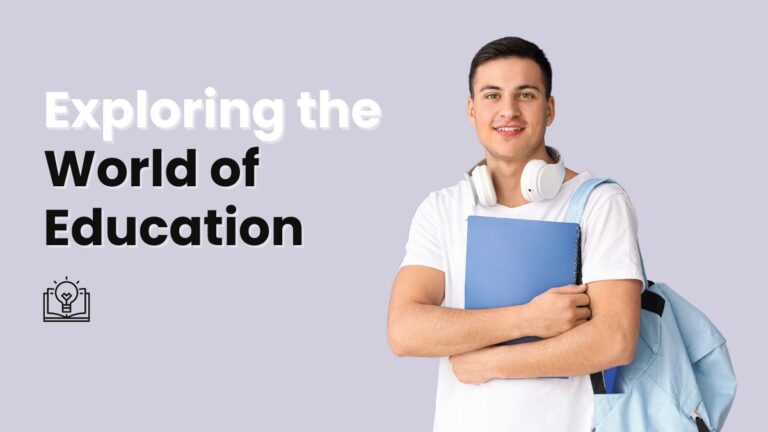Types of Teaching Styles: Teaching is as much an art as it is a science, and in order to successfully engage, inspire, and educate their pupils, educators adopt a variety of pedagogical approaches and methodologies. As a result of the fact that varied pedagogical approaches cater to a variety of learners’ preferences, it is essential for teachers to be flexible and choose the approach that is most suited to both their pupils and the material being taught. In this article, we will look into the many pedagogical approaches, show some examples, and discuss the advantages that these approaches provide in the ever-changing field of education.
1. The Traditional Lecture Style Definition:
The traditional lecture style is characterized by the instructor’s delivery of knowledge to students in the form of lectures, which are often also presented in a manner that only allows for one-way dialogue.
An example of this would be a college lecturer giving a lecture on the subject of history, presenting information such as facts, context, and perspectives.
The advantages include that this style may effectively transmit a vast quantity of information, which, resultingly, makes it appropriate for introducing new subjects or summarizing important ideas.
2. The approach of the Socrates
Types of Teaching Styles: The Socratic Method is a style of inquiry-based education in which the teacher employs open-ended questions to foster critical thinking as well as debate among students. This method was named after the Greek philosopher Socrates.
Consider the following scenario: a teacher at a high school is posing questions to his or her pupils such as “What is justice?” and “Why do you think this character made that decision?”
Advantages: It encourages independent thought, develops abilities in problem-solving, and stimulates spirited class debates.
3. The Flipped Classroom Description:
A flipped classroom is one in which students individually examine educational materials (such as videos or books) before class, and then during class time they participate in discussions, activities, or problem-solving.
As an example, a science instructor may send students home with a video lecture on a scientific idea to watch, and then utilize the in-class period for hands-on experiments and open discussion.
Active learning, student involvement, and personalised teaching are all fostered as a result, which is a benefit.
4. The Collaborative or Group-Based Learning Method Description:
This method of instructing pupils encourages students to work together in groups to solve issues, create projects, or debate various subjects.
The class is broken up into smaller groups, and each of those groups is tasked with doing independent study on the cultural traditions of a certain nation.
Advantages: It improves students’ abilities to work together as a team, communicate effectively, and think critically, while also instilling in them a feeling of personal responsibility.
5. A Description of the Inquiry-Based Teaching Method
Types of Teaching Styles: This method of teaching includes providing questions, issues, or situations to students and encouraging them to explore, research, and discover answers on their own.
Students in elementary school are led through a straightforward scientific investigation to discover why it is essential for plants to grow in the sun.
Advantages: It fosters an inquisitive nature, talents in finding solutions to problems, and a more profound comprehension of the topic at hand.
6. The Experiential or Hands-On Teaching Style Description:
In this approach, rather than depending exclusively on lectures or textbooks, students learn via first-hand experiences and activities that are directly applicable to real-world situations.
An instructor of geography could plan a tour so students can learn about the geology and geography of their immediate area, for instance.
Benefits include making learning more remembered, fostering the development of skills, and bridging the gap between theory and real-life experiences.
7. The Montessori Approach to Education
The Montessori Method places an emphasis on self-directed education and creating a well prepared classroom environment in which pupils are free to pursue their own areas of interest.
For instance, a preschool instructor creates a warm and welcoming environment and provides a variety of instructional resources for the students to choose from.
Advantages: It encourages autonomy, self-control, and a passion for education from a young age.
8. A Description of Direct Instruction:
“Direct instruction” refers to the process of teaching a topic in an unambiguous manner, using a curriculum that is often pre-written and having well-defined goals.
As an example, a math instructor may use a programmed computer program to guide pupils through the process of learning multiplication tables step by step.
Advantages: It gives pupils a sense of organization and clarity, which helps to ensure that they obtain a strong foundation in a topic.
9. A Description of Differentiated Instruction:
Differentiated instruction is a method of teaching that adapts lessons to the talents, interests, and preferred modes of learning of each individual student within the same classroom.
The following is an example of how a teacher at a middle school may accommodate pupils with diverse levels of reading ability by providing a range of reading materials at different levels.
Advantages: It accommodates a wide range of students by allowing each individual to advance at their own rate and in the manner that best suits them.
10. A Description of Blended Learning
Blended learning is a method of education that mixes conventional classroom teaching with online learning materials. It provides both flexibility and the ability to tailor one’s education.
As an example, a high school educator incorporates internet quizzes and video courses into the in-class discussion format.
The advantages are that it can cater to a variety of learning styles, that it offers flexibility, and that it helps students become ready for digital learning settings.
Types of Teaching Styles: The final word
The field of education is very varied, much like the pupils it serves, and in order to be a great educator, you need to be able to adapt to these variances. There is no one method of instruction that is inherently better to all others; rather, educators often use a variety of methods in order to cater to the specific requirements of their students and the topics they teach. Educators are able to create dynamic and engaging learning environments that encourage intellectual development, critical thinking, and a lifetime passion for learning when they have a grasp of the numerous teaching styles that are available and the advantages that come with each type.





